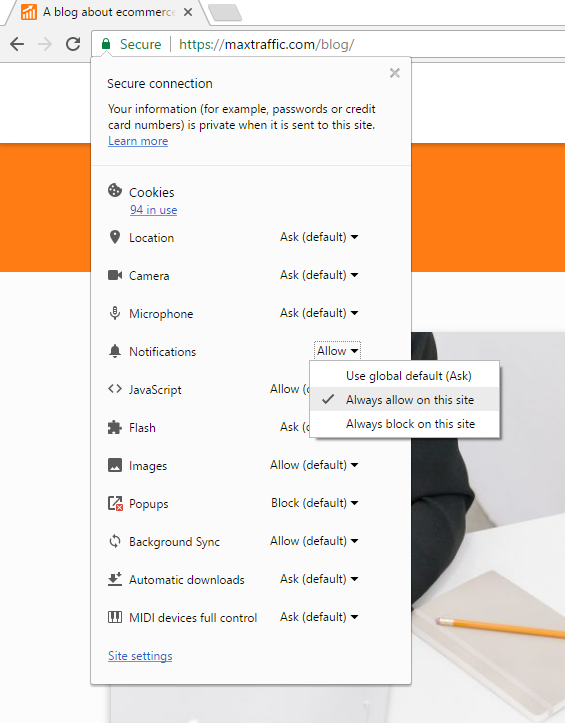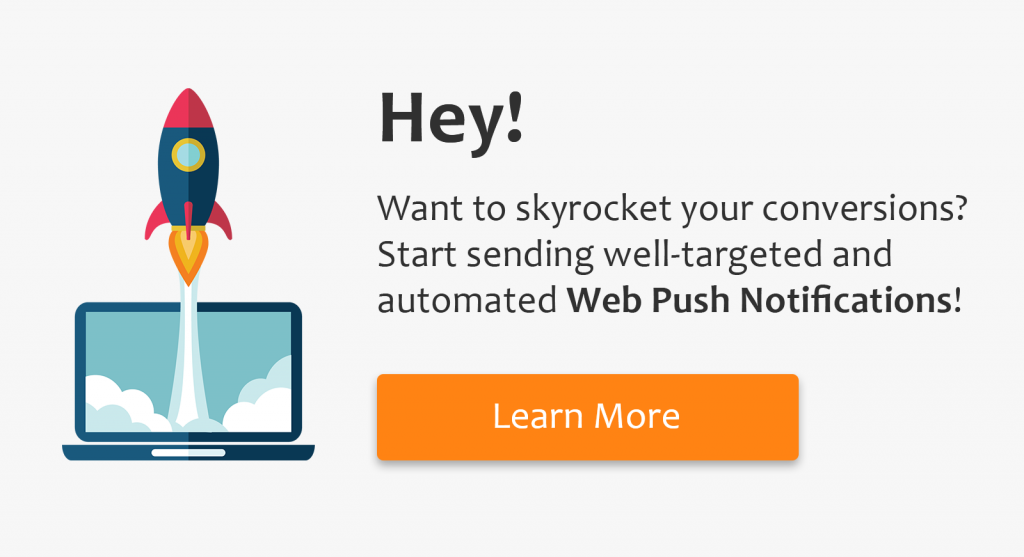
Web push notifications are one of the highest converting marketing channels out there that can significantly increase sales for online businesses. And even though the adaptation of web push is expanding rapidly amongst online business, there still are a lot of misconceptions about the technology.
It is about time to bust the myths that could be stopping you from reaching better conversion results. Have a look at these web push notification statistics and facts – so you know the truth.
Here are the web push notification myths we will bust:
[toc]
1. Push notifications are difficult to implement
A belief that website push notifications are difficult to implement is supported by most marketers who haven’t worked with this marketing channel before. Even though it might take time and resources to launch push notifications on your own, you can implement push notifications on your website as ready to use marketing tool.
There are heaps of desktop push service providers who have all the necessary coding done for you. As a client who wants to implement push notifications, you only need to copy-paste ready Javascript into your website. It can be done in a few minutes by anyone who has an access to a website.
2. People don’t want to receive push notifications
Those who know little to nothing about push notifications nor how to use them correctly are fast to judge that they are intrusive and unwanted.
There’s a number of reasons why website visitors choose not to receive push notifications. However, most commonly prospects assume that push messages will be:
– sent too often;
– deliver irrelevant information;
– used for promotional purposes only.
To prove this assumption unreasonable, businesses are encouraged to develop push communication strategies that don’t ruin the user experience. In the end, it is not that users don’t want to receive push notifications, they don’t want to receive useless ones.
3. Push notifications do not bring significant conversion results
Desktop push notification conversion rates differ from industry to industry.
Typically, higher engagement rates are reached by websites with high-frequency users. In other words, websites that are visited on daily basis or are part of users’ daily routine. Take a look at average subscription and click-through rates attained by three different industries.

If CTR as high as 30% (in finance) is not considered as good conversion result, what percentage would? Keep in mind that depending on the traffic of a website, these statistics can translate into a direct line of communication with tens of thousands of customers within weeks or months. And with time, as subscriber list is growing, web push notification can become one of the primary ways to reach customers in an unobstructed way.
But if these web push statistics didn’t impress you, let’s talk about the potential reach web push has across the internet users.
Mobile push can only reach only those mobile users who have a device with that particular app on it. While desktop push can reach a prospect through any device that has a browser: computers, mobiles and tablets. By now, website push notifications are supported by Chrome, Firefox and Safari browsers.
Combined together these browsers take about 73% of all market share. It means that web push notifications can reach 7 out 10 internet users.
4. You need to develop a mobile app to send web push notifications
This must the most common misconception about web push notifications out there. So let’s get it straight: push notifications can be divided into two distinctive categories: mobile push notifications and website push notifications.
Mobile push notifications are sent to users through an application. Therefore, if you want to start sending notifications but your business doesn’t have an app yet, you have to develop one.
Website push notifications, on the other hand, are delivered to users through a browser. You no longer even need to have HTTPS protocol to start delivering push messages to your clients and prospects. With rapidly growing interest in push notifications, most service providers already have you covered by letting you send messages through their domain.
5. Visitor has to be on a website to receive a notification
Again, not true. Just like app user doesn’t have to be on the app to receive mobile push notifications, website visitor doesn’t have to be on the website to receive web push notifications.
Web push notification engagement with website visitor is purely dependent on his decision. Messages will be sent or blocked depending on whether he accepts or declines the invitation to receive push notifications. Therefore, the only time visitor has to be on the website is when the invitation is being presented for him.

Once this invitation is accepted, the website sends push messages to the subscriber whether he has the browser open or not. Push notifications are delivered to subscriber’s desktop or other device at any time he is connected to the internet.
Website push notifications are becoming one of the most popular ways for website owners to communicate with prospects and customers. That’s why every marketer or business owner should have a right understanding of what exactly are push notifications.
Moreover, they should understand how they work and what results can they bring to those who choose to implement and use them.
If these web push statistics and facts didn’t convince you – see for yourself.

